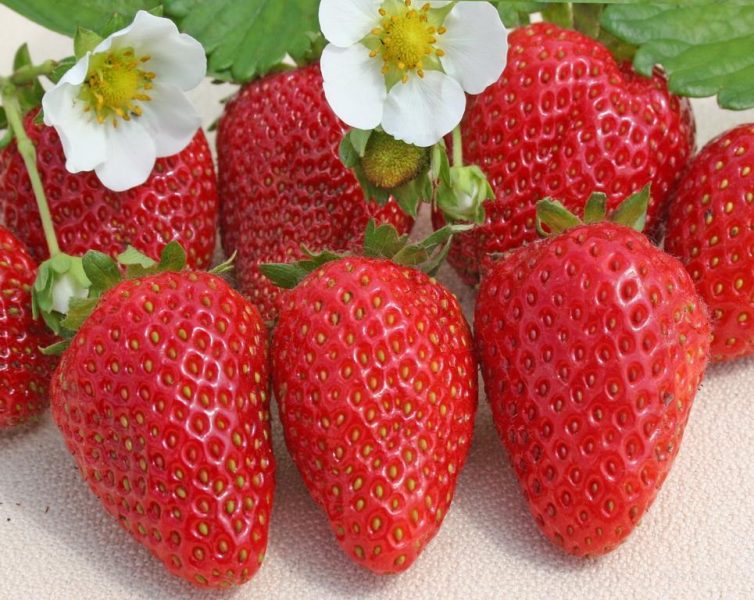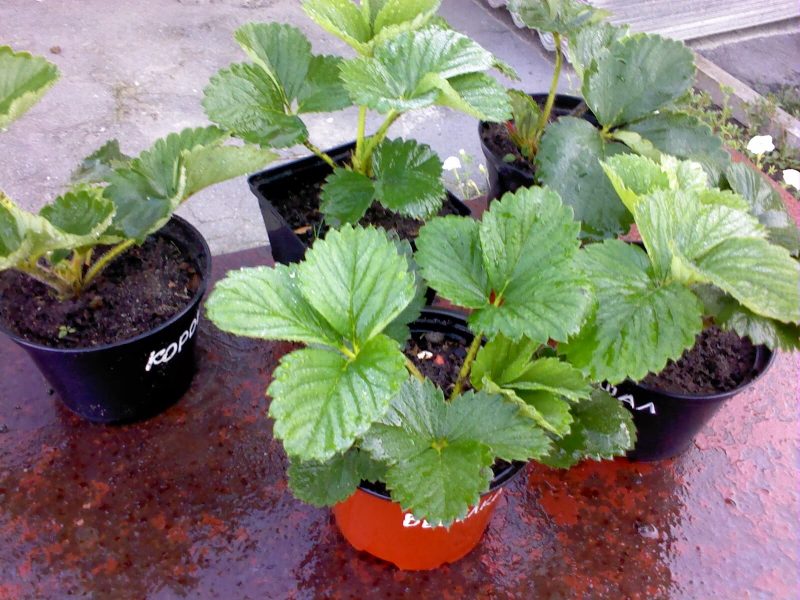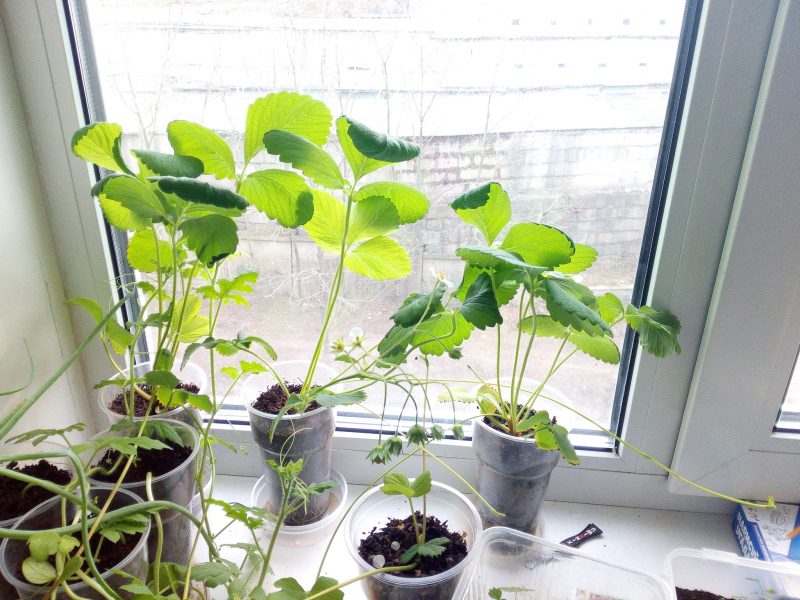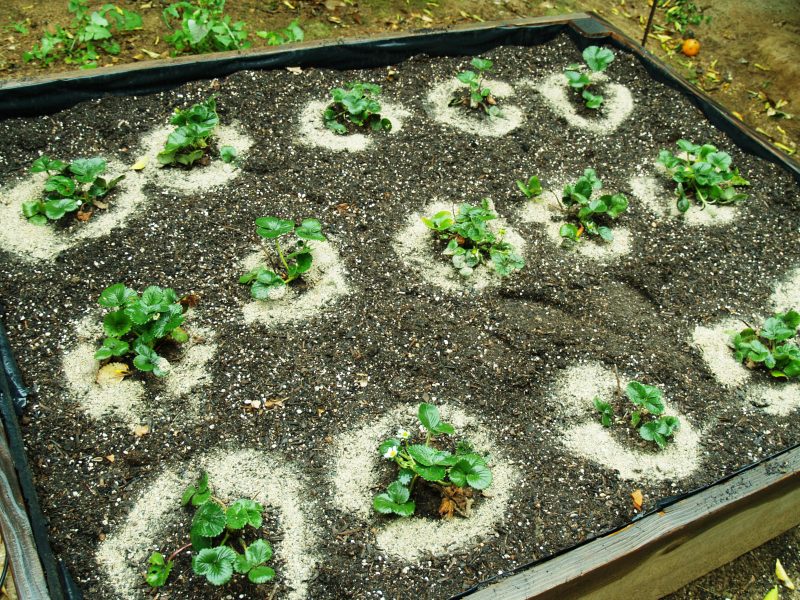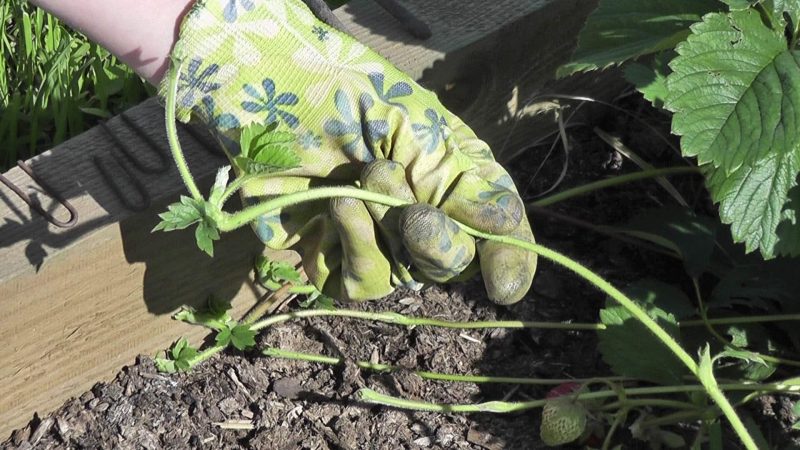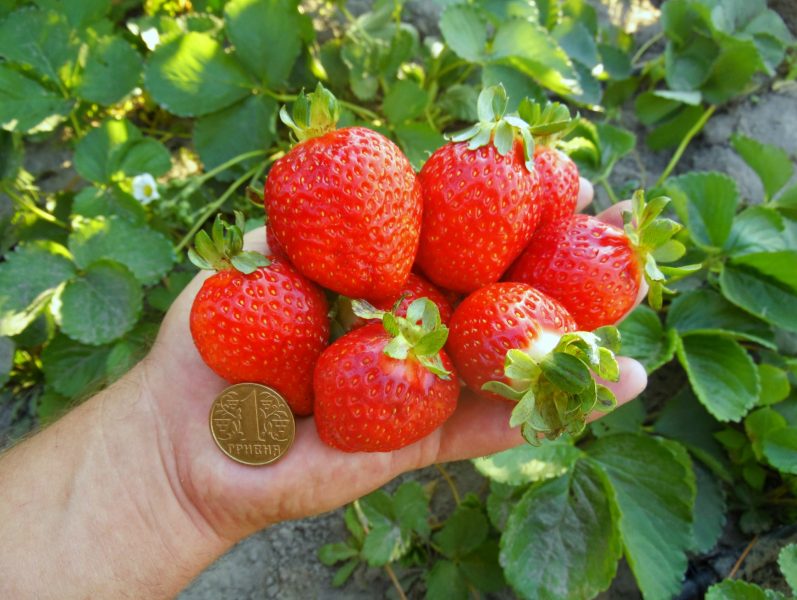Strawberries “Sand Andreas” is a rather unpretentious remontant variety that constantly forms new fruits.
Material Content:
- 1 Description and characterization of the San Andreas strawberry variety
- 2 Growing seedlings from seeds
- 3 Technology of planting plants in the ground
- 4 The rules for the maintenance of maintenance strawberries
- 5 Breeding methods
- 6 Pest and Disease Control
- 7 Harvesting and Aftercare
- 8 Possible growing problems
Description and characterization of the San Andreas strawberry variety
The berry was bred in California in 2002. The description of the San Andreas strawberry variety gives a complete picture of this beautiful plant that produces crops from May to the end of October. From one bush for the summer season, you can collect up to 1 kg of fruits with a slight acidity and strong aroma. The flesh of the berries is orange, the tails are strong, and the seeds are small.
Grade advantages:
- presentation of the fruit;
- large berries;
- disease resistant plant;
- prolonged fruiting;
- high transportability.
This variety also has disadvantages:
- bushes need to be changed often;
- requires attention;
- prone to attack by insect pests.
Growing seedlings from seeds
To get strong seedlings for the berry, the seeds must be decontaminated before sowing. To do this, in a bright red solution of manganese, lower the material for 30 minutes and mix. After processing, rinse the seeds in clean water and dry on a paper towel.
Strawberry remover "San Andreas" is very large, so just before sowing the seeds need to be soaked, which facilitates their germination. The work takes place in the following order: the material is laid out on a damp cloth and covered with a film. After 2 days, you can start sowing.
A variety is sown for growing seedlings in March.If there is a need to obtain planting material by the end of summer, then you need to sow in May.
First, prepare the soil mixture of the following composition:
- 3 parts of compost;
- 3 parts of garden land;
- ½ parts of ash.
The prepared soil is disinfected by heating for an hour in an oven at a temperature of 120 degrees. But this is not enough. The treated soil is cleaned in a warm place for 3 weeks, so that beneficial bacteria multiply in it.
Initially, the seeds are sown in one common box, and then sprouts are dived in containers.
Do this as follows:
- At the bottom of the box, holes must be made for water drainage. Then pour drainage with a layer of 3 cm.
- The container is half filled with prepared soil mixture.
- The resulting substrate is well moisturized.
- Seeds with tweezers are laid out on the surface of the soil at a distance of 3 cm. You don’t need to fill in strawberries, since it sprouts better in the light.
- After sowing, the box is tightened with film and 5-6 holes are made in it for air access.
- Such a homemade greenhouse is placed in a warm and bright place, but not in the sun.
- As necessary, the soil is moistened with a spray gun.
In two weeks, friendly shoots will appear. As soon as the seedlings begin to grow, it is necessary to start airing the greenhouse, increasing the ventilation time every day.
As soon as 3-4 real leaves appear on the sprouts, seedlings need to be peaked in separate pots. Every 12 days, young plants are fed with a solution of "Kemira".
Technology of planting plants in the ground
Repairing varieties are best planted in the open ground in autumn, although spring planting is also acceptable. As a rule, this work is carried out from August to the end of September.
The landing technology is as follows:
- Dig holes up to 10 cm deep on the bed. The recommended distance is 40 cm between rows and 30 cm between outlets.
- A little humus is poured into each well and spilled with a solution of manganese.
- Seedlings are placed in pits. If the seedlings were in peat pots, then you do not need to extract it from them.
- The roots are neatly straightened and covered with soil. When planting, the apical kidney should remain on the surface.
In the first season, all flowers should be cut off so that young sockets can get stronger.
The rules for the maintenance of maintenance strawberries
Caring for maintenance strawberries is not difficult, but certain rules will have to be strictly observed.
Read also:strawberries: growing and care
If you want to get an early crop of berries, the beds should be covered with a film. But what in this case be with pollination? Variety San Andreas has bisexual plants, and this is enough to not resort to artificial pollination.
Timely watering is very important for this variety. But you can’t be too zealous, pouring strawberries often and abundantly. If there is standing water near the outlets, then the plants will simply die. Even short-term drying of the land is unacceptable, as this will lead to a reduction in yield.
It is best to water the repairing varieties using drip irrigation. Then the moisture, slowly saturating the earthen lump around the roots, will not stagnate. Drop watering improves fruiting and grows well.
And nutrient soil is also required. Therefore, throughout the summer season, it is necessary to introduce both organic and mineral fertilizers. In May, the first top dressing is performed. Strawberry is especially responsive to the spring application of nitrogen fertilizing. You can water the plants with cow manure, diluting it 1:10 with water. An excellent fertilizer is chicken droppings, which are mixed with water in a ratio of 1:50.
Nitrogen dressing is applied at the rate of 20 g per square. For young strawberries, the necessary rate should be reduced by 2 times.
In the middle of the growing season, the plant is fed a second time. When flowering begins, phosphorus and potassium are added. 10 g of fertilizers are taken per square of the bed. At the end of the season, strawberry plantings are fertilized for the third time.You can add superphosphate or potassium chloride, spending 20 g of the substance per square bed.
Late autumn, strawberries are fed organic. You can fertilize plants with humus or well-rotted manure. For 5 squares, it is enough to use about 20 kg of nutritional formulations.
The beds are weeded and loosened in a timely manner. It is best to carry out these activities after watering the next day. Many gardeners mulch strawberries with straw or lawn grass to reduce moisture evaporation and facilitate planting care.
Breeding methods
Variety "San Andreas" perfectly propagated by a mustache. For this method, choose the strongest sockets. The mustache is instilled, and when young outlets grow on them, they are cut off from the mother bush and transplanted.
Still strawberries reproduce well by division, but this method is more time-consuming. Choose bushes older than two years. They dig a plant and divide the rhizome into equal parts. This procedure is best done in spring or late fall.
Pest and Disease Control
The variety is susceptible to certain diseases, the main of which are powdery mildew and spotting. Of the insects, ticks and aphids most often attack the variety.
It is possible to determine that the bush is affected by powdery mildew by a whitish bloom, which gradually acquires a brown color. The leaves of a diseased outlet begin to curl, and productivity decreases sharply. To cure, a weak solution of colloidal sulfur is most often used, for which 100 g of powder is dissolved in a bucket of water. Very heavily affected bushes will have to be destroyed.
The main symptom of spotting is the appearance of brown and gray spots in the center of the foliage. The leaves of the diseased plant quickly dry, and the bush weakens. For treatment, spraying with a Bordeaux mixture is recommended. To prepare a healing solution, 300 g of copper sulfate and 1 liter of boiling water are mixed. Separately, 100 g of lime are diluted in 1 liter of hot liquid. Once the mixture has cooled, they are poured into a bucket and 8 more liters of pure water are added. The bushes are treated twice with an interval of two weeks.
Aphids settled on strawberries are disposed of by spraying with a soap-ash solution. To do this, 300 g of ash are sieved, filled with boiled water and the mixture is actively heated for 30 minutes. Then the composition is poured into a bucket, add 50 g of soap chips and 10 l of water.
Strawberry mite is capable of causing significant damage to strawberry plantings in a short time. Attacks of this pest often end in the death of bushes. To combat the parasite use the drug "Fufanon", 15 g of which is diluted in 5 liters of water.
Harvesting and Aftercare
The presented variety bears fruit throughout the summer season, so you can pick berries every day. In the fall, they begin to prepare for winter. Before hibernation, strawberries are fed, but by no means fertilizers that contain nitrogen. High phosphorus formulations are suitable.
Leaves and peduncles are cut off before the onset of winter, but try not to damage the heart. In late autumn, plantings are covered with spruce branches, as this variety does not tolerate cold weather.
Possible growing problems
When growing varieties, some difficulties may arise. Most problems are usually associated with attacks by insect pests. If you follow the rules of cultivation, then there will not be much trouble.
Many gardeners enthusiastically fertilize in large quantities, hoping to get a rich harvest. Excess nutrients can be just as harmful as their deficiency. Top dressing is applied only according to the established rules.
If it will be especially hot in the summer, then the beds will have to be shadowed with special material. Strawberries should be insulated before wintering, as this southern variety does not tolerate frost at all.
The cultivation of the San Andreas repair strawberry is a very grateful work, because throughout the summer season you can collect a generous crop of large and fragrant berries!


